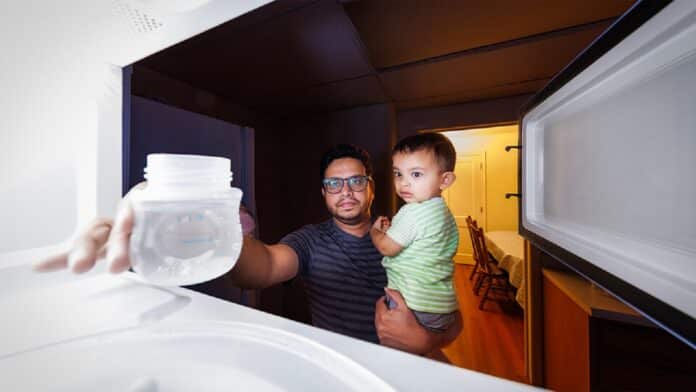In a recent study conducted by pioneering researchers, a staggering revelation has emerged, shedding light on the potential hazards of everyday microwaving practices. The investigation, centered around plastic containers commonly used for reheating food, has uncovered the release of billions of nanoplastics during the process. This alarming finding has sparked significant concerns among the scientific community and the general public, raising crucial questions about the impact of nanoplastics on human health and the environment.
New research from the University of Nebraska–Lincoln reveals a concerning link between microwaving plastic containers and ingesting minuscule plastic particles. Experiments indicate that popular plastic baby food containers in U.S. stores can release staggering amounts of plastic particles, reaching over 2 billion nanoplastics and 4 million microplastics per square centimeter of container.
While the health implications of consuming these particles remain uncertain, the study found that three-quarters of cultured embryonic kidney cells perished after exposure. The World Health Organization’s 2022 report advised limiting exposure to such particles, raising further alarm about the potential risks involved in the fastest way to heat food and beverages.
Kazi Albab Hussain, the study’s lead author and a civil and environmental engineering doctoral student at the University of Nebraska–Lincoln, said, “It is really important to know how many micro- and nanoplastics we are taking in. When we eat specific foods, we are generally informed or know about their caloric content, sugar levels, and other nutrients. I believe it’s equally important that we know the number of plastic particles in our food.”
Understanding the potential harm of plastic particle ingestion is vital, much like we comprehend the impact of calories and nutrients on our health. Research, including the study conducted by Kazi Albab Hussain and his team, highlights the strong correlation between the toxicity of micro- and nanoplastics and the level of exposure. Their study, initiated in 2021, sought to investigate plastic containers and pouches commonly used by parents, like Hussain, for baby food.
The experiments involved polypropylene and polyethylene containers, both FDA-approved plastics, filled with deionized water or 3% acetic acid and microwaved at full power for three minutes. The subsequent analysis revealed evidence of micro- and nanoplastics, raising concerns about their potential effects on human health.
Multiple factors influence the release of plastic particles during microwaving, such as the type of plastic container and its contents. Researchers at the University of Nebraska–Lincoln estimated that infants consuming microwaved water-based products and toddlers consuming microwaved dairy products experienced the highest concentrations of plastic particles based on their model, which considered particle release, body weight, and per-capita ingestion of various foods and drinks.
Additionally, experiments simulating refrigeration and room-temperature storage over six months suggested that both scenarios could lead to the release of micro- and nanoplastics. To raise awareness, Kazi Albab Hussain emphasized the importance of making informed choices while using plastic containers. To assess the impact on human cells, the team, with the assistance of Svetlana Romanova from the University of Nebraska Medical Center, exposed cultured embryonic kidney cells to actual plastic particles released from the containers, providing valuable insights into potential health implications.
In a groundbreaking study led by Kazi Albab Hussain from the University of Nebraska–Lincoln, the impact of micro- and nanoplastic ingestion was examined on kidney cells. The team discovered that only 23% of kidney cells exposed to the highest concentrations of plastic particles survived after just two days, indicating a significantly higher mortality rate than previously observed. This suggests that kidney cells might be more vulnerable to nanoplastics.
The study also highlighted that polypropylene containers and polyethylene pouches released approximately 1,000 times more nanoplastics than microplastics, irrespective of the experimental conditions. Addressing the potential health risks of micro- and nanoplastics, Hussain emphasized exploring alternative plastics that release fewer particles.
Considering the widespread use of plastics in food packaging, the research advocates exploring alternatives that release fewer plastic particles to ensure consumer safety. By shedding light on the release and effects of micro- and nanoplastics, the study contributes vital insights to understanding plastic pollution’s environmental and health consequences. Future research is needed to address unanswered questions and promote the development of safer packaging materials for the well-being of individuals and the environment.
Journal Reference:
- Kazi Albab Hussain, Svetlana Romanova, et al., Assessing the Release of Microplastics and Nanoplastics from Plastic Containers and Reusable Food Pouches: Implications for Human Health. Environmental Science & Technology. DOI:10.1021/acs.est.3c01942.
